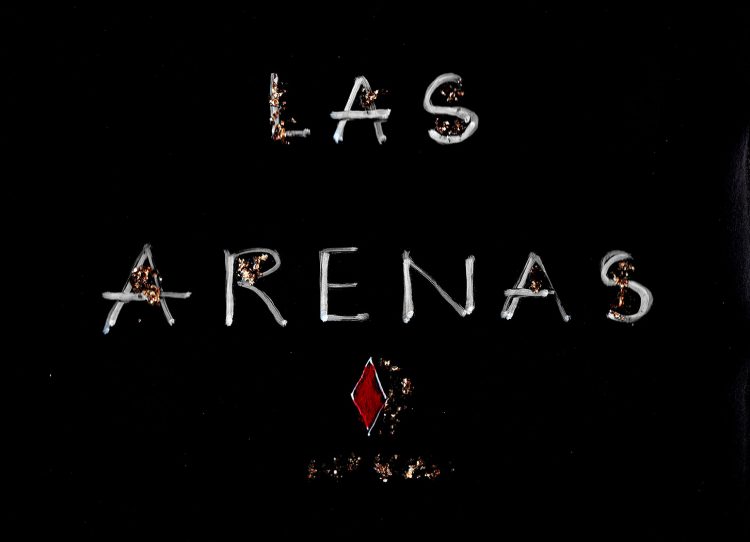
A tribute to Nimeño
The signature of life is inscribed within the geometrical shape
If an outstanding human being decides to do something, however simple it may seem, it becomes significant.
Lucas produced a series of thirty large-format paintings. On each canvas, he set aside a blank geometrical space that would be painted by bullfighters. This red geometrical shape became a piece of art in its own right because an outstanding human being recounted his past, present and future life in a secret language within this shape.
In this enclosed space, he leaves a part of his heart, his spirit and his soul forever…
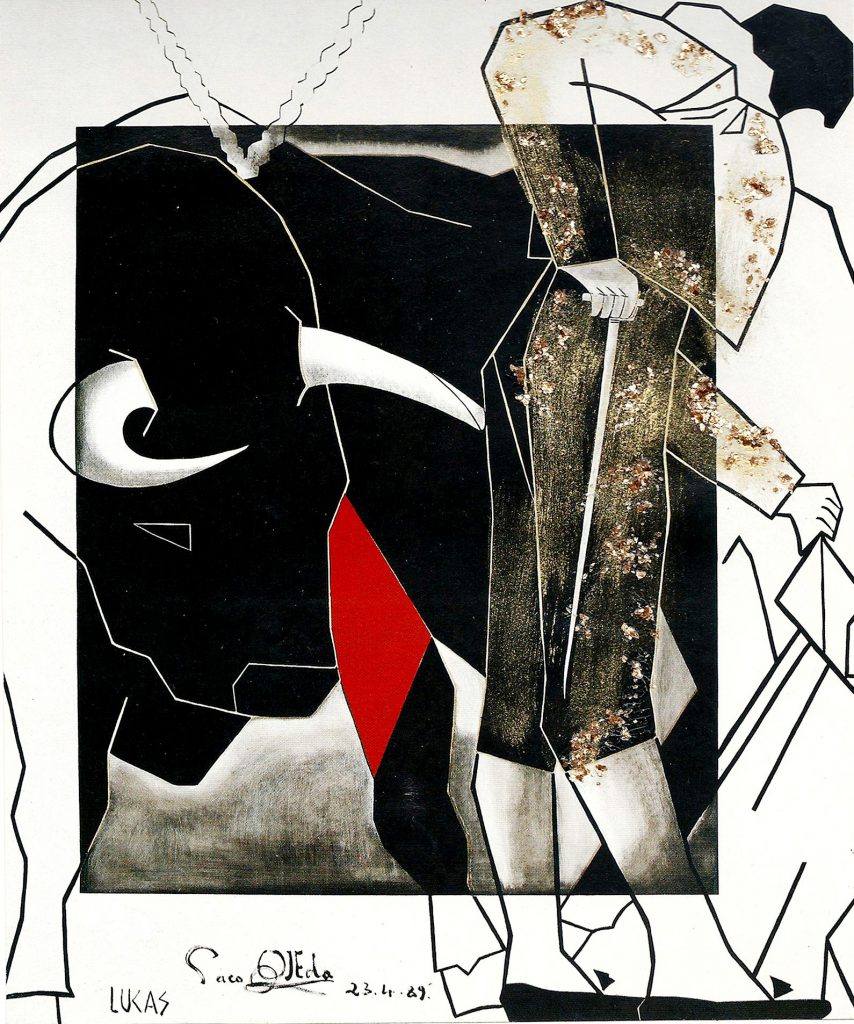
The names of the bullfighters who took part in this work of art with Lucas:
Paco Ojeda
Juan Antonio Ruiz ‘‘Espartaco’’
Ortega Cano
Miguel Baez Litri
Richard Milian
Juan Mora
“…I had always wondered where, on this Earth, God had placed this race of men for whom I could feel tenderness, respect and a deep friendship. Today, I know where they are, and I am waiting for them”.
Bold, proud Matador, your childhood continues, clad in sunshine and light.
What do you feel when, as you come out of the bullring, the cheering has stopped?
Do you feel a calming sensation or a big void? Do you feel happy or lost, like a child when the party is over?
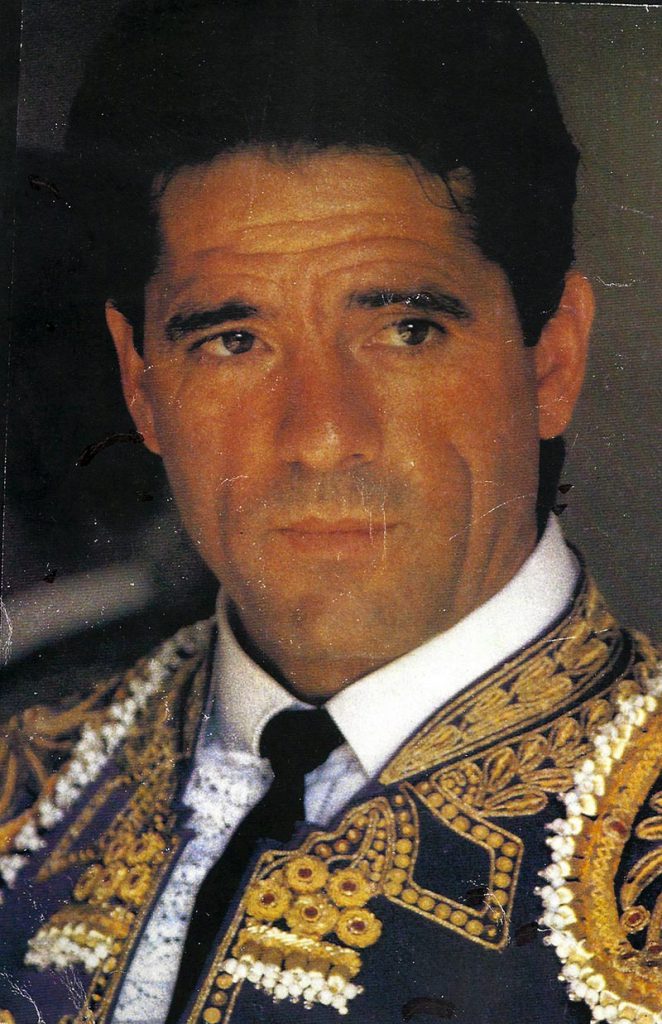
Paco Ojeda

Of the years that have sometimes been so hard, deep down I will always have the unavowed feeling that I came close to God and that He loved me, like one of his most cherished children.
Throughout the rest of my childhood, I remained clad in sunshine and light. Will it escape with the death of my last Toro?
Now it is summer in the land of men and I am cold.
I thank God for leaving me on this land of men, in this nomadic camp, in the shadow of the stars.
aujourd’hui c’est l’été sur la terre des hommes et j’ai froid.
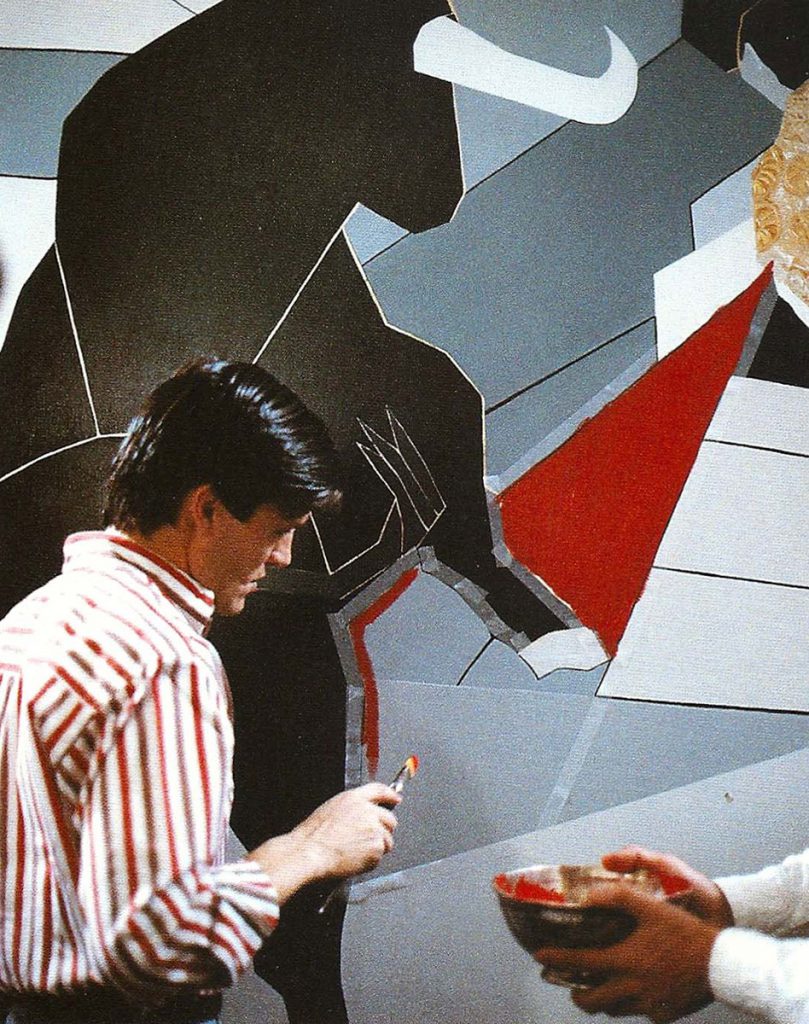
Juan Antonio Ruiz ‘‘ESPARTACO’’
This pictorial work retains its profound symbolism, that of a man risking his life in order to perpetuate ancient rites in communion with nature and the animal. This is what gives it its strength, its legitimacy and its longevity.
The hand that has lunged towards the cross of so many bulls, is now giving life, my life, that I am etching here for the past, present and future.
This painting will keep a record, a mark of what my world was like, a world of dreams, courage and fear.
I am leaving a part of me here, the most beautiful, secretive and deepest part, the one that has guided my entire life.
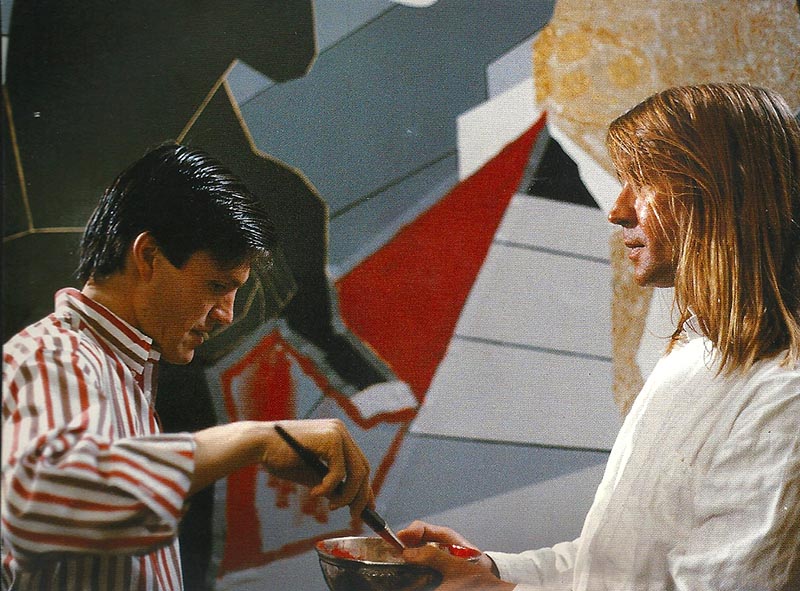
Juan Antonio Ruiz ‘‘ESPARTACO’’, Lucas

Carmen, à Jean Cau

A paco Ojeda

Lucas, my friend Richard Milian ‘The Lionheart’
The chapel at Château de Cambous

Jose Ortega Cano
José Ortega Cano. He had just been gored by a horn in a Spanish plaza where he received the Last Rites.
Jose Ortega Cano, un Seigneur…


ART IS BEING
LUCAS or the signature of life
(Henry Périer, art curator and biographer of Pierre Restany)
By presenting a complete set of 150 paintings by LUCAS, including 30 large format canvases (220×250), the Veranneman foundation offered the artist a spectacular introduction to the art world. In the heart of this prestigious venue and international centre for art, which serves as a focal point for contemporary schools of thought, the artist showed how extreme he could be. Reluctant to show his work, he had always stubbornly refused to exhibit. With the exception of a clutch of proponents of Outsider Art, his attitude was certainly not commonplace. Recognition by collectors was all he sought. LUCAS was waiting for his ‘opus magnum’. So when he joined the ranks of the select few, it didn’t go unnoticed.
An audacious project, and an act of faith
As an introduction to his initiative, LUCAS wrote:
“Kill so as not to be killed was the law of the first men to live on this earth. Both frightened yet fascinated by the great black aurochs, prehistoric man would depict it in rock paintings, larger and more impressive than any other animal species. Thus the legend was born, and over the thousands of years that would follow, the bull would become a sacrificial victim in men’s imaginations. Nowadays, only the bullfighter perpetuates these ancient rites whose profound meaning, stemming from the dawn of humanity, has been lost to us, but allows him to live with fear. By walking into the arena, he turns his existence into his fate and the talent of being lies in one’s fate”.
“I am going to produce some large format canvases focusing on the bull and the bullfighter. I will leave a blank geometrical space on each one that will become the focal point and essential part of the painting. In my chapel, the ‘toreros’ I have chosen will ‘paint’ this part with ‘bull’s blood’ and write their names on the bottom of the painting. The men will play as significant a part in the painting as the artist himself, adding the finishing touch without which the painting would be incomplete. This geometrical space painted by the bullfighter will also stand out from the main composition and become a work of art in its own right”.
This audacious project was viewed by the bullfighting community and art world extremely cautiously and with a lot of scepticism… “A very singular project yet one that is challenging to realise”, claimed author Jean Cau. “An act of faith”, predicted global art critic Pierre Restany, who said he would wait and see.
Magical moments and intense emotions
The man from Sanlucar de Barrameda, from the marshlands of the Guadalquivir, and living legend of 1980s Spain, came, solitary and alone. The huge paintings arranged on easels formed a vast fresco dedicated to bullfighting. The atmosphere was electric. The solemn-faced bullfighter, his cheeks marked by deep furrows. The aloof and extremely tense artist. Paco Ojeda concentrated whilst he filled the geometrical spaces that LUCAS had reserved for him on his canvases. The scene was strange. It was an indescribable, religious moment. The bullfighting star had fully grasped the significance of what the artist was asking of him and for a full two hours, would truly become a part of the painting. What an amazing feat it was to have persuaded the bullfighter to take part in this ritual. These magical moments of intense emotion would be replicated with Juan Antonio Ruiz ‘Espartaco’, José Ortega Cano, Miguel Baez ‘Litri’, Juan Mora and Richard Milian.
“More than a multi-faceted allegory of bullfighting, this is a genuine rebus that draws its inspiration from the time-honoured tradition of human expressivity. There is a kind of permanency in this primeval and fundamental relationship between man and beast…” sums up Pierre Restany in the foreword to the exhibition catalogue. He adds: “LUCAS’ project has the dimension and scope of a legend within a legend”. The human and artistic adventure that LUCAS had just experienced was extraordinary as it was, but it would have further, unexpected, repercussions…
From Lascaux to Lucas
Denis Vialou, one of the world’s great figureheads of palaeontology, proffers another interpretation based on his scientific experience:
“The black bull in the ring and ‘Enlightened man’ perpetuate the duality of life and death through intimate gestures of spellbinding beauty with a transient, stabbing fluidity. This is what LUCAS paints with tragic and magnificently moving depth… But now a red, diamond-shaped stain bloodies his work. Everything seemed intelligible and yet this sign puts a stop to immediate understanding. The imaginary bestiary of Lascaux is also home to signs, to simple or complex geometrical shapes. The signs at Lascaux and the red quadrilaterals in the works of LUCAS merge into a single vision of man, animals and their meanings which cannot be interpreted by logic alone… They invite the onlooker to put the finishing touches to them in his mind’s eye where meaning is given to what has been carefully hidden: abstract coupled with representational geometry serves as a metaphor for the living and yet continuously mortal relationship between Man and Animal”.
Through pure intuition, the artist had thus rediscovered the gestures of the first men. Incredible… So much so that you almost forget that his achievement is conveyed through superb, top quality painted works of art, prompting Jean Cau to write: “I admire your initiative, your asceticism, but let me tell you again, without your majestic talent, and I use these words wittingly, your ceremonial song would not “bring down the vaults of the temple” in the words of Esprit Fléchier”.